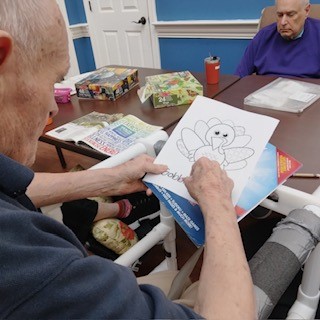
In the intricate tapestry of human experience, dementia often stands as a challenging thread, weaving confusion and uncertainty into the lives of both patients and their loved ones. As medical science delves deeper into understanding and treating this complex condition, art therapy emerges as a beacon of hope, offering profound benefits for those navigating the labyrinth of dementia.
Dementia, encompassing various conditions such as Alzheimer’s disease, progressively affects cognitive functions, memory, and behavior. Amidst this decline, communication can falter, leaving individuals feeling isolated and disconnected from their surroundings. Herein lies the transformative power of art therapy, transcending the barriers imposed by cognitive impairment and nurturing a profound connection to self and others.
At its core, art therapy provides a non-verbal avenue for expression, allowing dementia patients to communicate thoughts, emotions, and memories that may otherwise remain elusive. Through the strokes of a brush or the shaping of clay, individuals find a voice beyond words, rediscovering facets of their identity and reclaiming a sense of agency amidst the chaos of their condition.
One of the most remarkable benefits of art therapy lies in its ability to tap into preserved neural pathways, harnessing the brain’s inherent capacity for creativity and expression. Even as cognitive functions decline, the creative process engages regions of the brain associated with emotion, imagination, and motor skills, fostering neuroplasticity and potentially slowing the progression of dementia.
Moreover, art therapy serves as a sanctuary of solace amidst the storm of cognitive decline. In the safe and nurturing environment of the studio, patients find respite from the anxieties and frustrations that often accompany dementia, experiencing moments of joy, accomplishment, and self-discovery. With each brushstroke or collage, individuals embark on a journey of self-exploration, finding beauty and meaning in the midst of adversity.
Beyond its individual benefits, art therapy fosters a sense of community and connection among dementia patients, caregivers, and therapists alike. Group sessions provide opportunities for social interaction, peer support, and shared creative exploration, forging bonds that transcend the limitations of memory loss and cognitive decline. In this collective journey, participants find strength, resilience, and a shared sense of humanity amidst the challenges of dementia.
Furthermore, art therapy offers tangible improvements in cognitive function and quality of life for dementia patients. Research has shown that engaging in creative activities can enhance mood, reduce agitation and anxiety, and improve overall well-being. From painting and sculpture to music and dance, the arts provide a holistic approach to dementia care, enriching the lives of patients and caregivers alike.
As we navigate the complexities of dementia care, it becomes increasingly clear that traditional medical interventions alone are insufficient to address the multifaceted needs of patients. In this landscape of healing, art therapy emerges as a beacon of hope, offering a transformative pathway to connection, expression, and empowerment for those navigating the labyrinth of dementia.
In the delicate interplay of brush and canvas, clay and sculpture, dementia patients find a sanctuary of self-expression, a refuge of resilience, and a canvas of healing. In the vibrant tapestry of art therapy, the human spirit finds solace, connection, and renewal amidst the complexities of cognitive decline.
